Fanfulla della Domenica

Il Fanfulla della Domenica, supplemento domenicale del quotidiano Fanfulla (Firenze, 17 giugno 1870), fu fondato da Ferdinando Martini nel 1879 a Roma. Nati in un periodo in cui allegare il supplemento letterario domenicale era uno dei fenomeni più alla moda nell’ambiente delle pubblicazioni giornalistiche e letterarie, sono ricordati entrambi “per aver impresso un nuovo carattere al giornalismo informativo e culturale” italiano; soprattutto il Fanfulla della Domenica “segnò una specie di nuovo corso nella stampa italiana, fino ad allora relegata quasi esclusivamente all’ufficio di polemica politica”.

L’obiettivo principale del quotidiano Fanfulla era quello di “assicurare ai suoi lettori «varietà e diletto»” evitando la politica e questioni parlamentari che occupavano gran parte delle altre pubblicazioni. I suoi fondatori non erano rappresentazione di partiti politici e potevano garantire una solida competenza di stampo giornalistico e intellettuale, che mancava alla maggior parte dei periodici italiani dell’epoca.

L’energia, il brio, i patti chiari del suo fondatore, però, cominciarono a subire i primi colpi fin dal 1882, quando Oblieght decise di vendere i suoi 6 giornali, e quindi anche il FdD, ad una società finanziaria francese d’ispirazione clericale: questo significò l’abbandono dell’incarico proprio da parte di Martini a cui la cessione ad un tale proprietario parve scandalosa. Dopo di lui, solo Luigi Capuana seppe garantire al Fanfulla della Domenica l’energia con cui era nato. Capuana, forte della sua esperienza giornalistica come cronista teatrale, prima a La Nazione di Firenze e poi per il Corriere della Sera, seppe arricchire il FdD di idee originali e sempre nuove ma il suo apporto fu di breve durata: l’autore lasciò per motivi di salute nell’agosto del 1883, dopo soli 16 mesi.

L’efficacia del FdD continuò il suo declinare molto rapidamente se i critici segnalarono già nel 1885 che il settimanale aveva perso le sue caratteristiche di vivacità per acquisire sempre più un carattere accademico e ricercato. Al FdD mancò “il requisito indispensabile per un mezzo di comunicazione [...]: la percezione acuta e critica del tempo, la capacità di saper offrire oggi ciò di cui si parlerà domani e postdomani, sollecitando le coscienze, provocando scontro e scambi di opinioni.”
Il FdD rimase attivo per 40 anni ma come pubblicazione disimpegnata, nelle cui pagine gli autori si spostarono verso argomenti sempre più culturalmente eruditi, tralasciando e allontanandosi dalla cultura e dalla società contemporanee. Sempre più tradizionalista, incapace di nuocere alla politica e al dibattito culturale italiano, il Fanfulla della Domenica venne pubblicato fino al 1919, quando il 31 ottobre uscì il suo ultimo numero.
Nel corso dei suoi 40 anni di vita, il FdD ospitò autori come Giovanni Verga, Giosuè Carducci, Edmondo De Amicis, Arturo Graf, Gabriele D’Annunzio, citando solo i più celebri, e numerose furono anche le firme femminili che scrissero sulle sue pagine, tra cui si ricordano Grazia Deledda, Marchesa Colombi, Emma Perodi, Contessa Lara, Matilde Serao.


Il Fanfulla della Domenica si occupò di critica letteraria presentando al pubblico italiano sia testi di autori italiani contemporanei e approfondimenti su testi antichi, sia traduzioni, approfondimenti e critiche relative ad autori stranieri, anche d’oltre Europa.
Carducci era stato invitato a pubblicare da Ferdinando Martini, che l’aveva conosciuto in giovane età, e scrisse per il supplemento per un paio di anni sia poesie sia prose.
D’Annunzio, invece, fu presentato per la prima volta come nuovo giovane poeta proprio nelle pagine del FdD nel maggio 1880 da Giuseppe Chiarini, fraterno amico di Carducci e di Enrico Nencioni, uno dei successivi direttori dello stesso supplemento. Sul FdD, D’annunzio pubblicò poesie e racconti e, nel 1882, esordì come critico letterario, pubblicando testi e prime analisi letterarie, anche della sua stessa opera.

Nella collezione proposta sono stati digitalizzati fascicoli e annate ad integrazione dei numeri già consultabili online sul sito della Digiteca di Roma.
Per completare la digitalizzazione dell’opera manca ancora la digitalizzazione dell’annata 1891. In quell’anno, il FdD fu integrato nel quotidiano Fanfulla, riducendosi a 2 pagine interne al numero domenicale.
[Citazioni da Fanfulla della domenica, a cura di Antonia Arslan e Mariagrazia Raffele (Treviso, Canova, 1981)].







 è un servizio del
è un servizio del